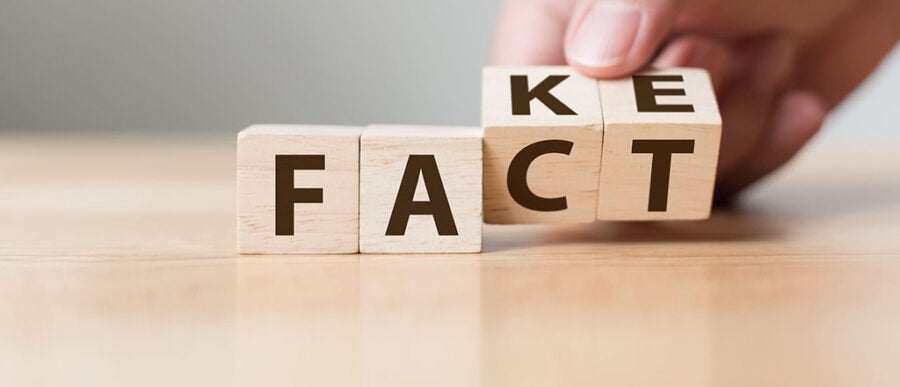Several months before the contentious 2016 election, a fake news website masquerading as a local television station posted a story that Pope Francis had endorsed Donald Trump for president. WTOE 5 News claimed “news outlets around the world” were reporting the story, which included a bogus statement released by the Vatican.
That work of pure fiction, which went viral, is not the sort of fakery that gets the attention of Project Ratio, a novel research effort to map news content through its production, dissemination and consumption. The team behind Project Ratio is less focused on overtly fake news — like the Pope story, alien abductions and Elvis sightings — and more concerned with misinformation coming directly from mainstream media sources.
“As technology evolves, as people’s ability to propagandize evolves, you move away from that type of thing and you’re spreading more misinformation in more subtle ways,” said David M. Rothschild, a Wharton graduate and economist with Microsoft Research who is one of the principal investigators for Project Ratio.
He said that as fake news becomes more subtle, it also becomes more difficult to spot and define. “And this overt fake news that everyone’s chasing becomes less important.”
Rothschild joined the Wharton Business Daily radio show on SiriusXM to talk about his work with Project Ratio, which is one of several programs operated by the nonprofit research network Harmony Labs. (Listen to the podcast above.) Duncan Watts, a Penn Integrates Knowledge professor with an appointment in Wharton’s operations, information and decisions department, is also a principal investigator. The two researchers are co-authors of a related paper titled, “Evaluating the Fake News Problem at the Scale of the Information Ecosystem.”
Improving the Information Landscape
The stated goal behind Project Ratio is to improve the news information landscape that underpins democracy. But this media tracking initiative goes deeper than similar efforts because the researchers are using natural language processing and machine learning to analyze different data points for thousands of pieces of news across the web and television, dating back to 2014.
While foreign interests, conspiracy groups and fantasy news sites have been responsible for the spread of misinformation online, the 2016 election showed that mainstream media also played a role.
“We saw this as a topic that was really underappreciated, under-researched, and we found out a lot of interesting things about how mainstream media inadvertently — or not — spreads a lot of misinformation that ultimately affects voters,” Rothschild said.
According to the research, most Americans still consume their news on television despite the explosive growth of online content. Television news accounts for roughly five times as much consumption as online news. But even more significant, overall news consumption amounts to less than 15% of Americans’ daily media diet, while fake news makes up a scant .15%.
“Our results suggest that the origins of public misinformedness and polarization are more likely to lie in the content of ordinary news or the avoidance of news altogether as they are in overt fakery,” Rothschild, Watts and their co-authors wrote in their paper.
Rothschild said media elites control what becomes a big story beyond the obvious topics, such as Sept. 11 or the coronavirus pandemic. He pointed to the 2016 story about presidential candidate Hillary Clinton’s deleted emails as an example.
“The biggest topic of the 2016 election was Hillary Clinton’s IT security,” he said. “And let’s be clear, there was no reason that even had to be anything of a story. The mainstream media chose to run with it.”
“Defining fake news and understanding what’s real and not real — this is a Herculean task.”
Fake news certainly has an impact on consumers, sometimes with dangerous consequences, such as the debunked Pizzagate conspiracy theory that led a North Carolina man to fire shots inside a Washington, D.C., pizzeria he believed was part of a child sex-slave ring. But the misinformation that mainstream media spreads is powerful in more subtle ways, such as quoting President Trump saying that voter fraud among mail-in ballots is widespread although there is no evidence of fraud.
“This is a much more prevalent form of misinformation,” he said.
Profit Motives
According to Rothschild, audiences were primed for fake news long before the election cycle. In fact, it was initially driven by profit, not votes. Early stories focused on energy drinks, fad diets and products sold in pyramid schemes. Fake news purveyors soon discovered the conservative right was more apt to consume such content, so it became a business decision, Rothschild said.
In a world where information is available 24/7 in a variety of formats, it’s important for people to understand how difficult it has become to catalog it, he noted. Separating fact from fiction is easy when stories are absurd, but that task is far more complicated when the fakery is subtle.
“Defining fake news and understanding what’s real and not real — this is a Herculean task, and I don’t think people appreciate the hard work and difficulty for Facebook and Youtube and even the mainstream media to try to figure out what things are,” he said. “Even understanding how people consume stuff and where they’re getting their information in an increasingly complex world is a tricky question.”



